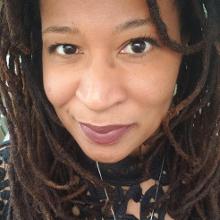Wears Valley, TN photo by Dereck Hammers
We often think of our protagonists as morally infallible. Their side of the story reigns supreme, we think: other points of view are, at best, peripheral to the story at hand. But what happens when we think deeply about the other side of the story? This exercise is designed to help you offer your characters the increased depth that comes when you think about the ways in which they are, in fact, wrong about who's right.
Part I:
Be sure you have fully sketched your protagonist. Small details yield large character arcs. For example, does your protagonist use Prell shampoo? Prell shampoo can clean pennies. It's terrible for your hair. What does using Prell say about your character's sense of self? Was your protagonist picked on in the second grade? Did his grandmother like him? How tall is she? What is his dream car? Does she enjoy baseball? Why or why not? A good guide, when one sits down to write fiction, is that one should know three times as many character details than one could even hope to ever land on the page.
Out of character detail comes conflict, of course. A character who is 4'6" might have a Napoleonic complex. A character who is afraid of heights may be unable to join their new boyfriend on a skiing trip. And think back to the Prell—if your character is constantly doing that to their own hair, what does that say about their sense of obsession?
Part II:
Your character, of course, sees only one side of these details--the side that's most favorable to him. But what if his grandmother didn't like him because he didn't like her? What's the other side of the story? The other side of the story is, in fact, where things get truly interesting.
To that end, I want you to write another sketch—that of the antagonist. Possible things to include in this sketch: does the antagonist remember the day their relationship with the protagonist changed for the worst? If there was one thing the antagonist would like to say to the protagonist but can't politely, what would that thing be? And, of course, sketch small details about your antagonist as well. Remember, everyone is fighting a battle inside—even villains in novels.
These sketches should direct you to internal conflicts you hadn't yet dreamed up and dialogue that turns heart wrenching. Happy discovering!
Editors’ Note: “Dreaming Up Conflict” by Jacinda Townsend first appeared in Piano in a Sycamore: Writing Lessons from the Appalachian Writers’ Workshop, edited by Silas House and Marianne Worthington for Hindman Settlement School, 2017. Used by permission of the author.

_____________________________________________
Home Archives Fiction Poetry Creative Nonfiction Interview
Featured Artist Reviews Multimedia Masthead Submit
_____________________________________________

